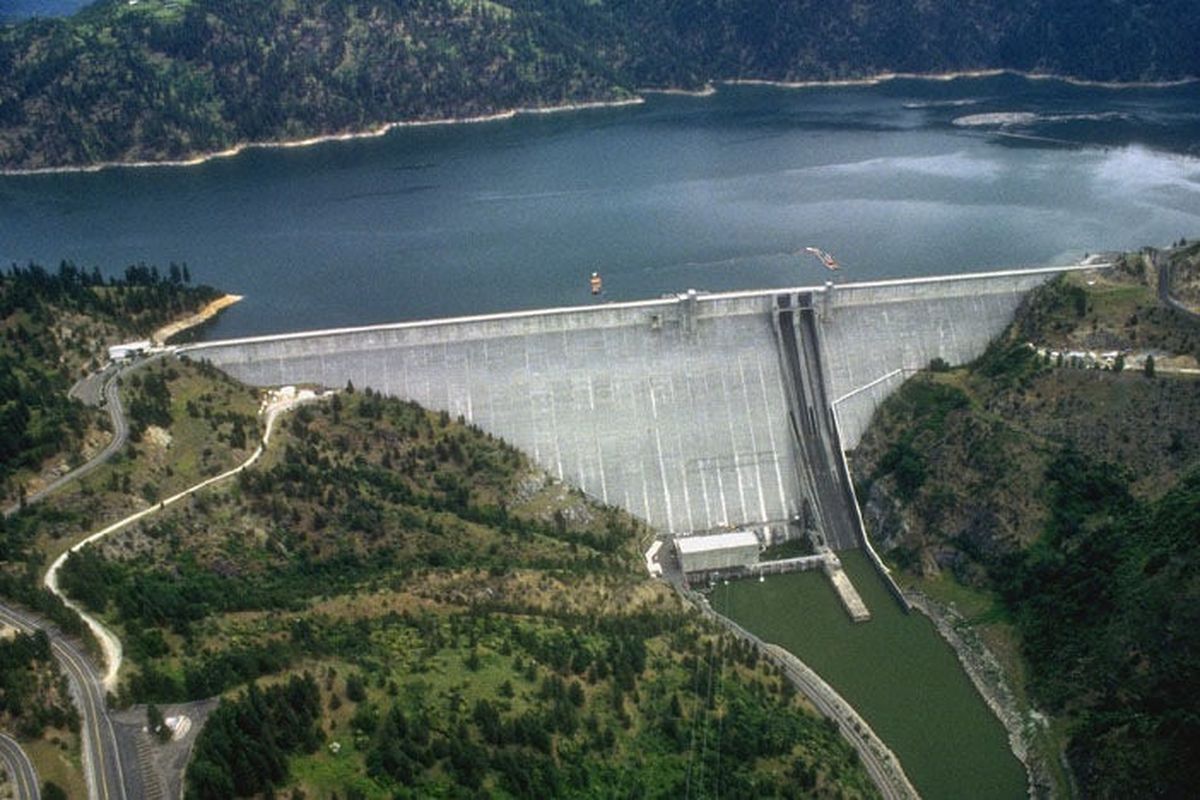Bass notes: The bronzebacked footballs of Dworshak Reservoir

When I was still in high school, I fished for steelhead in Idaho’s North Fork Clearwater River long before Dworshak Dam was completed on that river in 1973. At 717 feet in height, the dam backed up water for 54 miles, creating Dworshak Reservoir in a long, deep canyon covered with Douglas fir and ponderosa pine. Slowly, the water rose to the top of the dam, creating depths up to 650 feet deep and eliminating steelhead runs up the North Fork forever.
About a dozen species of fish were already present in the river system when it was dammed, and smallmouth bass and kokanee were planted after the big reservoir filled. The two species have combined to create a self-sustaining smallmouth bass fishery unparalleled in the western United States and rivaling even the well-known Boundary waters of Minnesota and the waters of Lake Erie and Lake Michigan.
The steelhead were still available on the North Fork below the dam and in the Clearwater itself, and I continued to fish for these through the 1980s, but I had begun to hear stories of smallmouth bass in the reservoir that were so fat they looked like footballs and pushed the scale past seven pounds. Reluctantly at first, my focus eventually changed from steelhead to bass. I’d had some action-packed days fishing for smallmouth on the Snake River and also below Grand Coulee Dam, and the 2-pound smallmouth I caught there were a handful on light gear. I couldn’t imagine what a 7-pounder would be like.
The first time I fished Dworshak Reservoir I caught a 4-pound smallmouth bass at the mouth of Elk Creek and lost another at the boat that seemed twice as large. Later that same day I spoke with an Idaho fish biologist who told me many Dworshak Reservoir smallmouth much larger than the ones I’d caught were dying of old age.
It was a fishery I couldn’t ignore.
The smallmouth fishery on Dworshak is tied intimately to the robust kokanee (landlocked sockeye salmon) population. A nutrient restoration program has resulted in increases of Daphnia zooplankton, the main food of kokanee. More food equals more and larger kokanee, and more kokanee means more bass. Kokanee die after spawning and it takes a few years for those remaining to replenish the lake with the smallmouth’s favorite high-energy, high-growth food. When the kokanee population is down, the bass don’t grow as large. There will still be good numbers of big bronzebacks available, but there won’t be as many, and the upcoming crop will be smaller. This situation occurs when an anticipated high early spring runoff prompts the Corp of Engineers to flush huge volumes of water through the dam to prepare for the coming deluge. Thousands of kokanee that would have spawned in the fall are literally flushed from the system when this occurs because unlike the bass, they are suspended in deep water and not protected by structure.
Shallower water along the shorelines of Dworshak Reservoir is almost carpeted with smallmouth bass in the summer. It is nothing for even a novice with an inexpensive rod and reel and a tube jig or Curly-tail to catch and release 30 or more 9- to 12-inch fish in a morning of casting, even from shore. Idaho Fish and Game encourages anglers to take home their six-fish limit of the smaller smallmouth because growth of bass less than 12 inches is slow, and removing some of these fish means more food to go around.
Most of Dworshak’s large smallmouth are taken in the early spring when the fish are feeding aggressively before spawning and water temperatures have risen into the 50s. Five- and 6-pounders are common. After the spawn, though, the big ones head for deeper water and huge numbers of smaller fish replace them in the shallows near creek mouths and along rocky shorelines.
The big fish – like the 9½-pounder that teenager Quinten Kelly of Lewiston caught in early April 2016 – are generally deeper and more selective. Kelly’s fish was measured and released. At 24½ inches long, it was just ounces shy of Dan Steigers’ Idaho record, which stands at 9.72 pounds. He pulled the fish from Dworshak in 2006. The state’s catch-and-release record also comes from Dworshak – a 23¾-inch smallie caught by Joey Walton in 2022.
The world-record smallmouth bass was caught in 1955 by David Hayes at Tennessee’s Dale Hollow Lake. It weighed 11 pounds, 15 ounces. He was trolling a pearl white bomber.
And while Dale Hollow has given up numerous fish more than 10 pounds, the last one of that size was caught in 1986.
Relatively speaking, Dworshak Reservoir is a young body of water and the best may be yet to come. If the water is not flushed so violently for a couple of consecutive springs, giving the kokanee a chance to spawn and grow, many biologists believe the next world-record smallmouth will be caught there.